Louis Aimé Augustin Le Prince (French: ; 28 August 1841 – vanished 16 September 1890) was a French artist and the inventor of an early motion picture camera, possibly being the first person to shoot a moving picture sequence using a single lens camera and a strip of (paper) film. Although some have credited him as the "Father of Cinematography", his work did not influence the commercial development of cinema—owing at least in part to the great secrecy surrounding it.
| Louis Le Prince | |
|---|---|
| Born | Louis Aimé Augustin Le Prince 28 August 1841 Metz, France |
| Disappeared | 16 September 1890 (aged 49) Dijon, France |
| Status | Vanished |
| Occupation | Artist, Art teacher, inventor, |
| Spouse(s) | Elizabeth Le Prince-Whitley (m. 1869–1890) |
A Frenchman who also worked in the United Kingdom and the United States, Le Prince's motion-picture experiments culminated in 1888 in the city of Leeds, England. In October of that year, he filmed moving-picture sequences of Roundhay Garden, Leeds Bridge and his brother playing the accordion, using his single-lens camera and Eastman's paper negative film. This work may have been slightly in advance of the inventions of contemporaneous moving-picture pioneers such as William Friese-Greene and Wordsworth Donisthorpe, and years in advance of that of Auguste and Louis Lumière, and William Kennedy Dickson (who did the moving image work for Thomas Edison).
Le Prince was never able to perform a planned public demonstration in the US because he mysteriously vanished from a train on 16 September 1890. His body and luggage were never found, but, over a century later, a police archive was found to contain a photograph of a drowned man who could have been him. The reason for his disappearance varies. The theories include a murder set up by Edison, suicide, secret homosexuality, intentional disappearing in order to start a new life, and a murder by his brother over their mother's will.
At the start of 1890, the Edison workers had begun experimenting with using a strip of celluloid film to capture moving images. The first public results of these experiments were shown in May 1891. But Le Prince's widow and son, Adolphe, were keen to advance Louis' cause as the inventor of cinematography. In 1898 Adolphe appeared as a witness for the defence in a court case brought by Edison against the American Mutoscope Company. This suit claimed that Edison was the first and sole inventor of cinematography, and thus entitled to royalties for the use of the process. Adolphe Le Prince was not allowed to present his father's two cameras as evidence (and so establish Le Prince's prior claim as inventor) and eventually the court ruled in favour of Edison. However, a year later that ruling was overturned.
Screenplay
On 10 January 1888 Le Prince was granted an American patent on a 16-lens device that could serve as both motion picture camera (which he termed "the receiver") and a projector (which he called " the deliverer"). That same day he took out a near-identical provisional patent for the same devices in Great Britain, proposing "a system of preferably 3, 4, 8, 9, 16 or more lenses". Shortly before it was due to be granted, he submitted an addendum which described in one sentence a single-lens system, but this was neither fully explained nor illustrated, unlike the several pages of description of the multi-lens system.
This addendum was submitted on October 10, 1888 and, on October 14, Le Prince used his single-lens camera to film Roundhay Garden Scene. During the period 1889-1890 he worked with the mechanic James Longley on various "deliverers" (projectors) with one, three and sixteen lenses. It appears the three-lens version was the most successful. Those close to him have testified to him exhibiting his first films in his workshop and possibly elsewhere privately, but they were never presented to anyone outside his immediate circle of family and associates.
In 1889 he took French-American dual citizenship in order to establish himself with his family in New York City and to follow up his research. However, he was never able to perform his planned public exhibition at Morris–Jumel Mansion in Manhattan, in September 1890, due to his mysterious disappearance. Consequently, Le Prince's contribution to the birth of the cinema has often been overlooked.
| “ | In conclusion, I would say that Mr. Le Prince was in many ways a very extraordinary man, apart from his inventive genius, which was undoubtedly great. He stood 6ft. 3in. or 4in. (190cm) in his stockings, well built in proportion, and he was most gentle and considerate and, though an inventor, of an extremely placid disposition which nothing appeared to ruffle. | ” |
| —?Declaration of Frederic Mason (wood-worker and assistant of Le Prince, April 21, 1931, American consulate of Bradford, England) | ||
Father and mother
On 28 August 1841, Le Prince's father was a major of artillery in the French Army and an officer of the Légion d'honneur. He grew up spending time in the studio of his father's friend, the photography pioneer Louis Jacques Mandé Daguerre, from whom the young Le Prince received lessons relating to photography and chemistry and for whom he was the subject of a Daguerrotype, an early type of photograph. His education went on to include the study of painting in Paris and post-graduate chemistry at Leipzig University, which provided him with the academic knowledge he was to utilise in the future.
Adulthood
He moved to Leeds, West Yorkshire, UK in 1866, after being invited to join John Whitley, a friend from college, in Whitley Partners of Hunslet, a firm of brass founders making valves and components. In 1869 he married Elizabeth Whitley, John's sister and a talented artist. The couple started a school of applied art, the Leeds Technical School of Art, in 1871, and became well renowned for their work in fixing colour photography on to metal and pottery, leading to them being commissioned for portraits of Queen Victoria and the long-serving Prime Minister William Gladstone produced in this way; these were included alongside other mementos of the time in a time capsule—manufactured by Whitley Partners of Hunslet—which was placed in the foundations of Cleopatra's Needle on the embankment of the River Thames.
In 1881 Le Prince went to the United States as an agent for Whitley Partners, staying in the country along with his family once his contract had ended. He became the manager for a small group of French artists who produced large panoramas, usually of famous battles, that were exhibited in New York City, Washington DC and Chicago.
During this time he began experiments relating to the production of 'moving' photographs, designing a camera that utilised sixteen lenses, which was the first invention he patented. Although the camera was capable of 'capturing' motion, it wasn't a complete success because each lens photographed the subject from a slightly different viewpoint and thus the image would have jumped about, if he had been able to project it (which is unknown).
After his return to Leeds with his family in May 1887, Le Prince built and then patented a single-lens camera in mid-late 1888. An experimental model was developed in a workshop at 160 Woodhouse Lane, Leeds. An updated version of this model was used to shoot his motion-picture films. It was first used on 14 October 1888 to shoot what would become known as Roundhay Garden Scene, the world's first motion picture. Le Prince later used it to shoot trams and the horse-drawn and pedestrian traffic crossing Leeds Bridge. The film was shot from Hicks the Ironmongers, now the British Waterways building, a building on the south east side of the bridge, now marked with a commemorative Blue plaque.
Working with the skilled mechanic James Longley, he attempted to create a projector during 1889 and 1890. The images were to be separated, printed and mounted individually on a flexible band, moved by perforations. It seems they did attempt to create a single lens projector, but ultimately settled for a three-lens device. His family and co-workers say they saw these images projected on a screen in the Leeds workshop, but no public projection ever took place.
Suspicious disappearance
In September 1890, Le Prince was preparing to go back to the UK, to be followed by a trip to the U.S. to have the public première of his work. Before his journey, he decided to return home to France and visit friends and family. Having done so, he left Bourges on 13 September to visit his brother in Dijon. He would then take the 16 September train to Paris, but when the train arrived, Le Prince's friends discovered that he was not on board. He was never seen again by his family or friends. No luggage or corpse was found in the Dijon-Paris express, nor along the railway. The only person to see Le Prince at the Dijon station was his brother. No one saw Le Prince in the Dijon–Paris express after he was seen boarding it, nor did anyone notice any strange behaviour or aggression in the Dijon-Paris express.
The French police, Scotland Yard and the family undertook exhaustive searches but never found his body or luggage. This mysterious disappearance case was never solved. Four main theories have been proposed:
- Perfect suicide
- The grandson of Le Prince's brother told film historian Georges Potonniée that Le Prince wanted to commit suicide because he was on the verge of bankruptcy. He had already arranged his suicide and he managed for his own body and belongings never to be found. However, Potonniée noted that Le Prince's business was profitable and that he was proud of his inventions, and thus had no reason to commit suicide.
- Patent Wars assassination, "Equity 6928"
- Christopher Rawlence pursues the assassination theory, along with other theories, and discusses the Le Prince family's suspicions of Edison over patents (the Equity 6928) in his 1990 book and documentary The Missing Reel. At the time that he vanished, Le Prince was about to patent his 1889 projector in the UK and then leave Europe for his scheduled New York official exhibition. His widow assumed foul play though no concrete evidence has ever emerged and Rawlence prefers the suicide theory. In 1898, Le Prince's elder son Adolphe, who had assisted his father in many of his experiments, was called as a witness for the American Mutoscope Company in their litigation with Edison . By citing Le Prince's achievements, Mutoscope hoped to annul Edison's subsequent claims to have invented the moving-picture camera. Le Prince's widow Lizzie and Adolphe hoped that this would gain recognition for Le Prince's achievement, but when the case went against Mutoscope their hopes were dashed. Two years later Adolphe Le Prince was found dead while out duck shooting on Fire Island near New York.
- Disappearance ordered by the family
- In 1966, Jacques Deslandes proposed a theory in Histoire comparée du cinéma (The Comparative History of Cinema), claiming that Le Prince voluntarily disappeared due to financial reasons (already shown to be false) and "familial conveniences". Journalist Léo Sauvage quotes a note shown to him by Pierre Gras, director of the Dijon municipal library, in 1977, that claimed Le Prince died in Chicago in 1898, having moved there at the family's request because he was homosexual; but he rejects that assertion. There is no evidence to suggest that Le Prince was gay.
- Fratricide, murder for money
- In 1967, Jean Mitry proposed, in Histoire du cinéma, that Le Prince was killed. Mitry notes that if Le Prince truly wanted to disappear, he could have done so at any time prior to that. Thus, most likely he never even boarded the train in Dijon. He also questions that if t
Watch movie Man Walking Around A Corner online on Amazon
Watch movie Man Walking Around A Corner online
Watch The Movie On PrimeShree Krishna Leela Full HD Movie Download
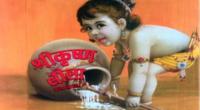
Narsimha Full HD Movie Download

Main Balwan Full HD Movie Download

Ghar Full HD Movie Download

Bhanwar Full HD Movie Download
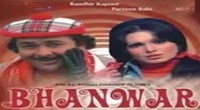
Saheb Bahadur Full HD Movie Download
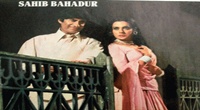
Mera Ghar Mere Bachche (1985) Full HD Movie Download
.jpg)
Puthu Kavithai Full HD Movie Download
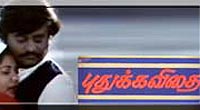
Kaminey Full HD Movie Download

Mylari Full HD Movie Download

Senapathi Full HD Movie Download
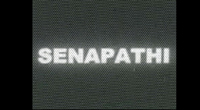
Sahasam (2005) Full HD Movie Download
.jpg)
Swapna Lokam (1999) Full HD Movie Download
.jpg)
Aaj Ka Naya Yelgaar Full HD Movie Download

Final Destination Full HD Movie Download
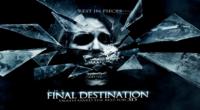
Patli Kamar Lambe Bal Full HD Movie Download
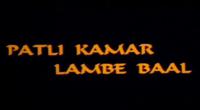
Don Seenu Full HD Movie Download

Muddulu Priyudu Full HD Movie Download

Palleturi Bava Full HD Movie Download
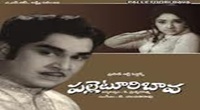
Chenna Kesava Reddy Full HD Movie Download

Sawaal (1982) Full HD Movie Download
.jpg)
Download latest Movie from bollywood
- 1> baaghi 3
- 2> THE SKY IS PINK MOVIE FULL STORY AND REVIEW
- 3> Luka Chuppi
- 4> TO ALL THE BOYS I’VE LOVED BEFORE
- 5> Kabir Singh
- 6> Street Dancer 3D
- 7> Simmba
- 8> Gone Girl
- 9> The Girl Who Lived
- 10> Ludo
- 11> DILWALE DULHANIA LE JAYENGE
- 12> GUILTY
- 13> The Godfather
- 14> Adventures of Rusty
- 15> Sooryavanshi
- 16> Satyameva Jayate 2
- 17> Thappad
- 18> Bhool Bhulaiyaa 2
- 19> KGFChapter 2
- 20> Mardaani 2
- 21> Pinjar
- 22> Shivaji maharaj
- 23> Ek Villian 2
- 24> Hungama 2
- 25> Divergent
- 26> Mumbai Saga
- 27> The Internship
- 28> HIT (telugu)
- 29> Panga
- 30> The perfect date
- 31> 16 December
- 32> Gopala Gopala (Telugu)
- 33> Brahmastra
- 34> Gangubai Kathiawadi
- 35> Manmadhudu
- 36> Nenu local
- 37> Mahanati
- 38> Shatamanam bavathi
- 39> Lagaan
- 40> After
- 41> MOM
- 42> Shamshera
- 43> Raguvaran BTech
- 44> Khakee
- 45> The villain
- 46> OM
- 47> Mr. perfect
- 48> Bueatifull mind
- 49> Hichki
- 50> Gabbar Singh
- 51> Jogi
- 52> Before Sunrise
- 53> Before Sunset
- 54> Before Midnight
- 55> The Big Bull
- 56> Top Gun: Maverick
- 57> The Purge
- 58> The Sky is Pink
- 59> Laxmmi Bomb
- 60> Sadak 2
- 61> Sufna
- 62> Prithviraj
- 63> PK
- 64> Coolie No 1(2020)
- 65> Black Widow
- 66> Dear Zindagi
- 67> Dil Bechara
- 68> PHIR HERA PHERI
- 69> WAR
- 70> Dostana
- 71> RRR: Roudram Ranam Rudhiram
- 72> Maidan
- 73> Dabbang 3
- 74> Chhalaang
- 75> life as we know it
- 76> SherShaah
- 77> Sandeep Aur Pinky Faraar
- 78> Event Horizon
- 79> 83
- 80> Radhe: Your Most Wanted Bhai
- 81> Gunjan Saxena: The Kargil Girl
- 82> Mr India
- 83> Vivah
- 84> Anokha Bandhan
- 85> Ghost
- 86> Bhoot: Part One - The Haunted Ship
- 87> Haseen Dilruba
- 88> Laal Singh Chaddha
- 89> Qismat
- 90> Rajput
- 91> Drive
- 92> Dil Chahta Hai
- 93> Dil Ki Baazi
- 94> Dil Ka Rishta
- 95> Teesri Manzil
- 96> Dil
- 97> Love Aaj Kal
- 98> Khaali Peeli
- 99> Bunty Aur Babli 2
- 100> Atrangi Re
- 101> Gulabo Sitabo
- 102> Jodi
- 103> Suraj Pe Mangal Bhari
- 104> Deewana
- 105> Attack
- 106> Sardar Udham Singh
- 107> Toofan
- 108> THE LOVEBIRDS
- 109> Jersey
- 110> Ginny Weds Sunny
- 111> Thalaivi
- 112> Shiddat
- 113> Angels vs Zombies
- 114> Koi Mil Gya
- 115> Thank God
- 116> Bhuj: The Pride of India
- 117> Hum Aapke Hain Kaun
- 118> The Platform
- 119> Bird Box
- 120> Roohi Afzana
- 121> Torbaaz
- 122> Nikamma
- 123> World War Z
- 124> Extraction
- 125> Train to Busan
- 126> Life of Pi
- 127> SHAADI MEIN JROOR AANA
- 128> Himmat Aur Mehnat
- 129> To All The Boys: P.S. I Still Love You
- 130> Mimi
- 131> Good Newwz
- 132> Shubh Mangal Zyada Saavdhan
- 133> Raabta
- 134> Harry Potter and the Philosopher's Stone
- 135> Harry Potter and the Chamber of Secrets
- 136> Chhapaak
- 137> War of the Worlds
- 138> Harry Potter and the Prisoner of Azkaban
- 139> Harry Potter and the Goblet of Fire
- 140> MURDER MYSTERY
- 141> Shakuntala Devi
- 142> Bachchan Pandey
- 143> Jayeshbhai Jordar
- 144> Sheer Qorma
- 145> Saina
- 146> 'O' Pushpa I hate tears
- 147> Kedarnath
- 148> MS Dhoni The Untold Story
- 149> Chhichhore
- 150> Badhaai Ho
- 151> Unstoppable
- 152> Oz the Great And Powerful
- 153> The Girl on the Train
- 154> Haathi Mere Saathi 2020
- 155> The Conjuring: The Devil Made Me Do It
- 156> Gandhi Se Pehle Gandhi
- 157> The Song of Scorpions
- 158> Srimanthudu
- 159> Hello Guru Prema Kosame
- 160> Beauty and The Beast
- 161> Black Panther
- 162> Charlie and the Chocolate Factory
- 163> Bole Chudiyan
- 164> Fidaa
- 165> Duvvada Jagannadham
- 166> Bruce Lee: The Fighter
- 167> Hyper
- 168> Yaara
- 169> Red (2020)
- 170> Shivam
- 171> That Is Mahalakshmi
- 172> Nishabdham
- 173> Aashram 2020 web series
- 174> Laxmii
- 175> Mismatched
- 176> STUDENT OF THE YEAR 2
- 177> NAIL POLISH
- 178> Ramprasad Ki Tehrvi
- 179> KAAGAZ
- 180> 12 o Clock
- 181> The Power
- 182> bolo hau
- 183> Tribhanga
- 184> JAMUN
- 185> Madam Chief Minister
- 186> Maasaab
- 187> Aadhaar
- 188> Tanhaji
- 189> Bhaagi 3
- 190> Bhootnath
- 191> MALANG
- 192> Jai Mummy Di
- 193> Haathi Mere Saathi 2021
- 194> Shakeela
- 195> Unpaused
- 196> Annayya
- 197> Vamsoddharakudu
- 198> Mrugaraju
- 199> Narasimha Naidu
- 200> Sankranti
- 201> Manasu Maata Vinadhu
- 202> Anjaane
- 203> Apaharan
- 204> Bachke Rehna Re Baba
- 205> Bewafaa
- 206> Roohi
- 207> Radhe
- 208> Zindagi Khoobsoorat Hai
- 209> Yeh Mohabbat Hai
- 210> Yeh Kya Ho Raha Hai?
- 211> The Tomorrow War
- 212> DehradunDiary
- 213> Meri Shaadi Karaoo
- 214> Matruu Ki Bijlee Ka Mandola
- 215> No One Killed Jesica
- 216> Aag Ka Goola
- 217> Eight Million Dollars
- 218> Three Hundred
- 219> Cats and Dog
- 220> Decoy
- 221> Gold Rush
- 222> You Have Got Mail
- 223> Final Destination three
- 224> Tofan
- 225> Jungle
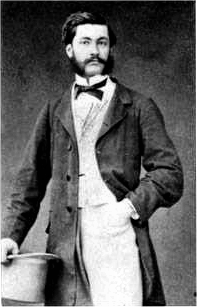 Story of movie Man Walking Around A Corner :
Story of movie Man Walking Around A Corner :
